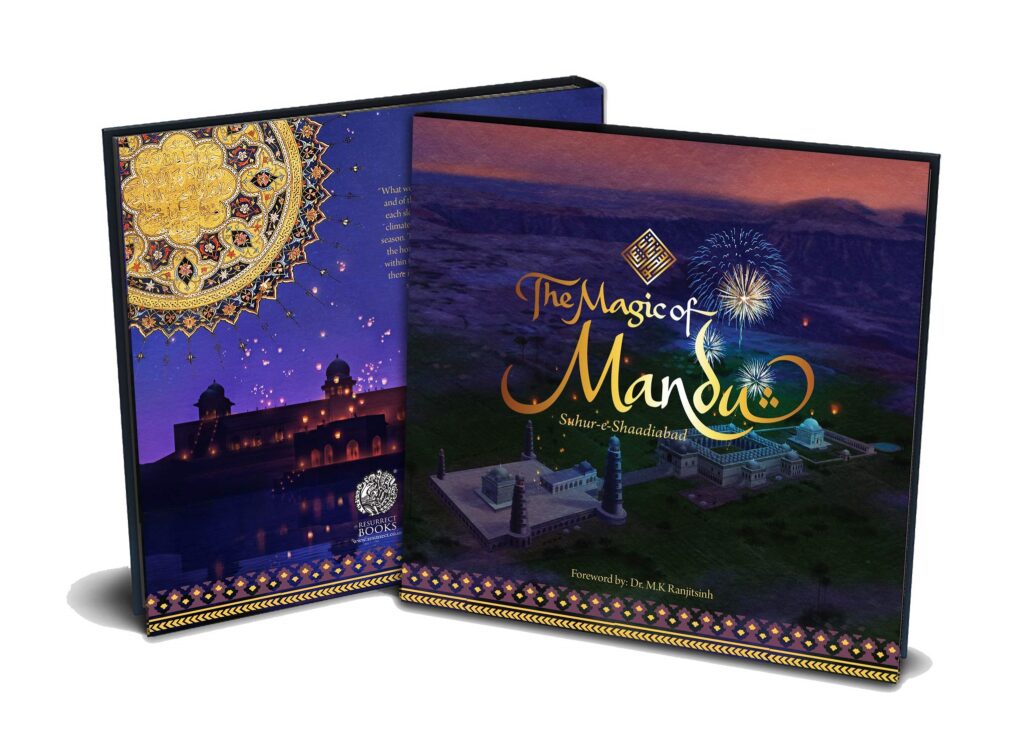
The Magic of Mandu – “Suhur-e-Shaadiabad” (ISBN: 978-8193208540); Co-Authored with Dr. Mamoun Sakkal and Ms. Ankita Roy; Foreword by Dr. M. K. Ranjithsinh
Published 2019 (Catalogued at the British Library)
254 Pages; 200+ Photographs; 60+ Illustrations; Hardbound
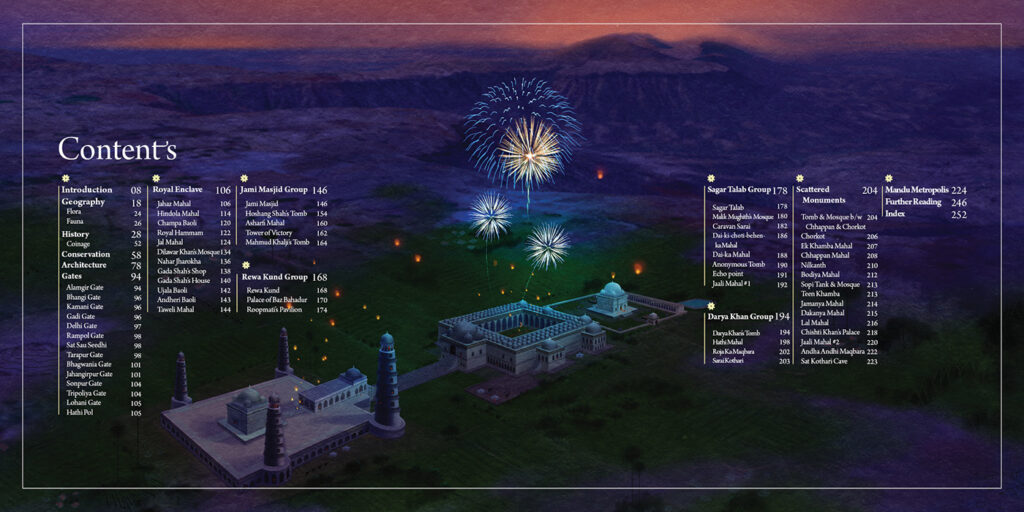
Inception | After knowing Mandu for close to two decades, I was developing a growing belief that there is nothing left in Mandu that I am unfamiliar with. This is when I came to know about Budhi Mandu. On my trekking expedition to the site, I came across many remains pre-dating the Islamic rule at Mandu. I also became aware of Mandu’s contribution in the development of arts and aesthetics in the Indian Subcontinent. My initial infatuation for its falling architectural masterpieces made way for my strong desire to unveil its cultural ethos. Glancing through the immaculately painted “Bustan of Saadi” at National Museum, Delhi, I first dreamt of doing this book that will depict the many facets of Mandu in its true splendor.

Roles & Responsibilities | In addition to multiple site visits for finalizing the text and ground plans, I directed my energies towards extensive research. From “Kalpasutra” in the National Museum to “Nimatnama” in British Library, I pieced together a whole gamut of data that had any remote connection with Mandu. Connecting with collectors of antiquarian books was especially interesting; if one collector offered high resolution images from Captain Claudius Harris’s book titled “The Ruins of Mandoo, the Ancient Mohammedan Capital of Malwah, in Central India” (1859) voluntarily without any charges, another pocketed $20 for every high resolution scan from the first edition of “Ahmad-ul-Umari – The lady of the lotus – Roopmati Queen of Mandu” translated by L M Crump (1926). With an objective of creating the most comprehensive book on Mandu, we reached out to a diverse band of subject experts. The book is made possible by generous inputs from Dr. M. K. Ranjitsinh, Renowned Square Kufic expert Dr. Mamoun Sakkal, Typeface designer Ms. Laura Worthington, Graphic Artist (and now Professor) Ms. Ankita Roy, Architectural Expert Ms. Jyotsna Mishra and Illustrator and Visualizer Shri Uday Sutar .
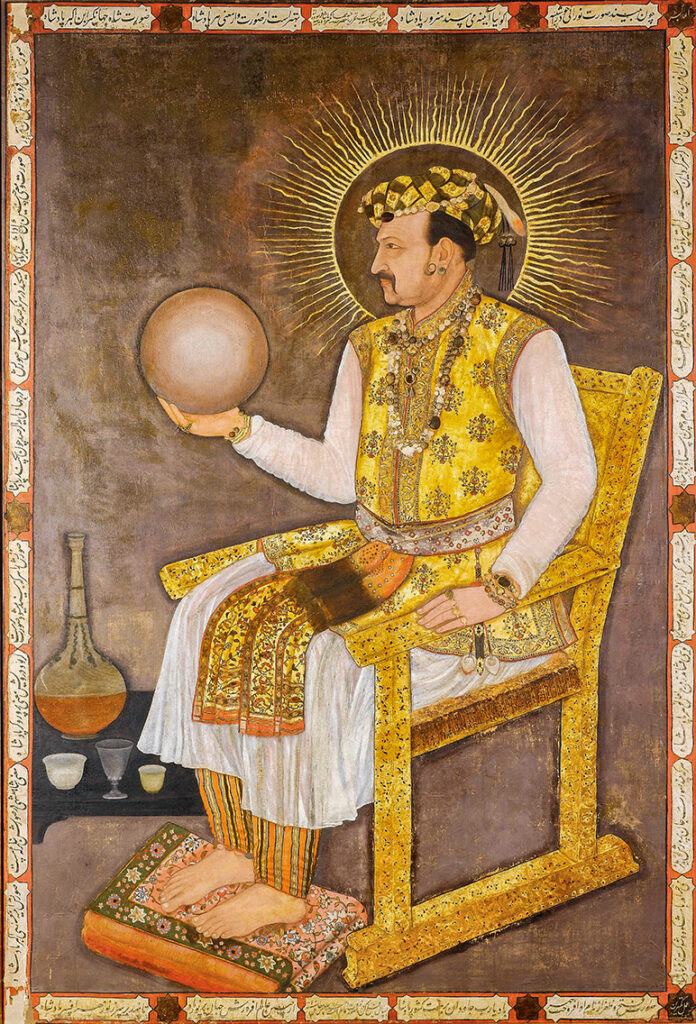
Objectives | This collaborative effort was aimed at recreating the lost splendor of Mandu – a medieval metropolis that thrived between 1401-1650 CE and went on to become the largest fortified capital in the whole world. With its multi-cultural beginnings, Mandu evolved as an originator of art and architecture in the whole of Indian Subcontinent. If the tomb of Hoshang Shah inspired the immortal Taj Mahal at Agra, residential palaces of Mandu worked as precursor for many such edifices, first at Chanderi and later at Gwalior. Even the much acclaimed Pietra-dura that the Mughal used extensively had its origin at Mandu. But all that is past and forgotten! Through “The Magic of Mandu” we wanted to setright the historical facts and accord Mandu the due respect that it rightfully deserved. We wanted to show how the world’s largest fortified metropolis, a centre of cultural sophistication looked like in its glorious days.

Coverage | After a brief description of historical background, the book focuses on Mandu’s famed architecture meticulously documenting each and every falling edifice. Research on Calligraphy with special emphasis on extant Square Kufic panels of Jal Mahal conclusively established the edifice to have been commissioned by Sultan Nasirudin Khilji. In the end, Mandu’s cultural epoch takes center stage with miniatures and manuscripts.
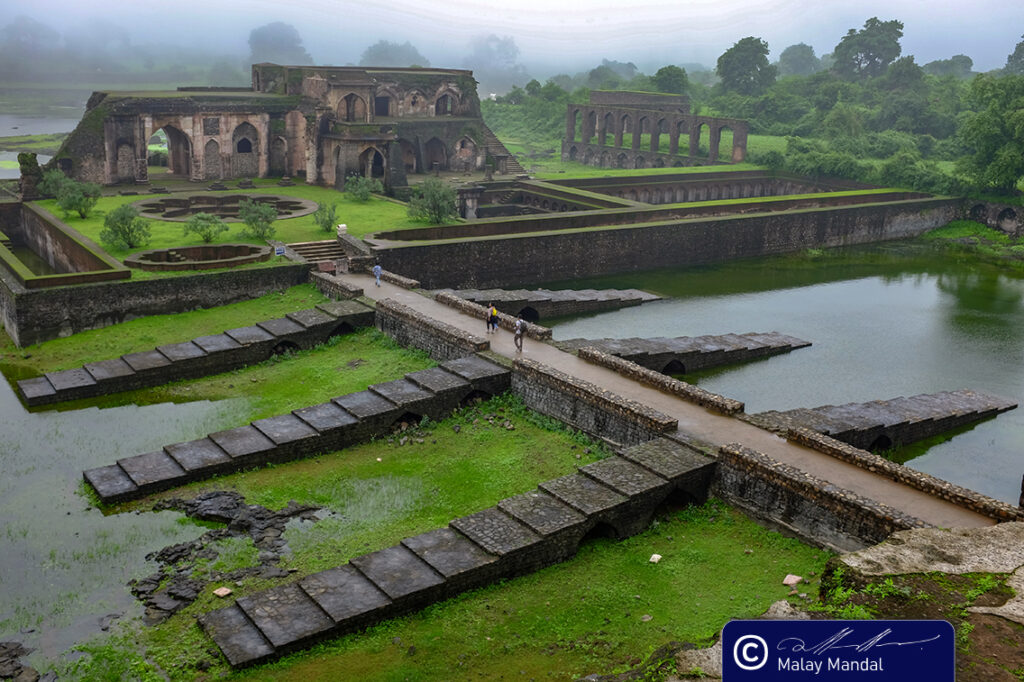
Response | “This book deserves a big applause for bringing into light the Kufic traditions of Mandu. Kufic Calligraphy was immensely popular in Central Asia and Iran but very rarely used in the Indian Subcontinent. Discovery of Kufic panels in Mandu … that too in a large scale is a mere pointer to what Mandu used to be in its heyday.”
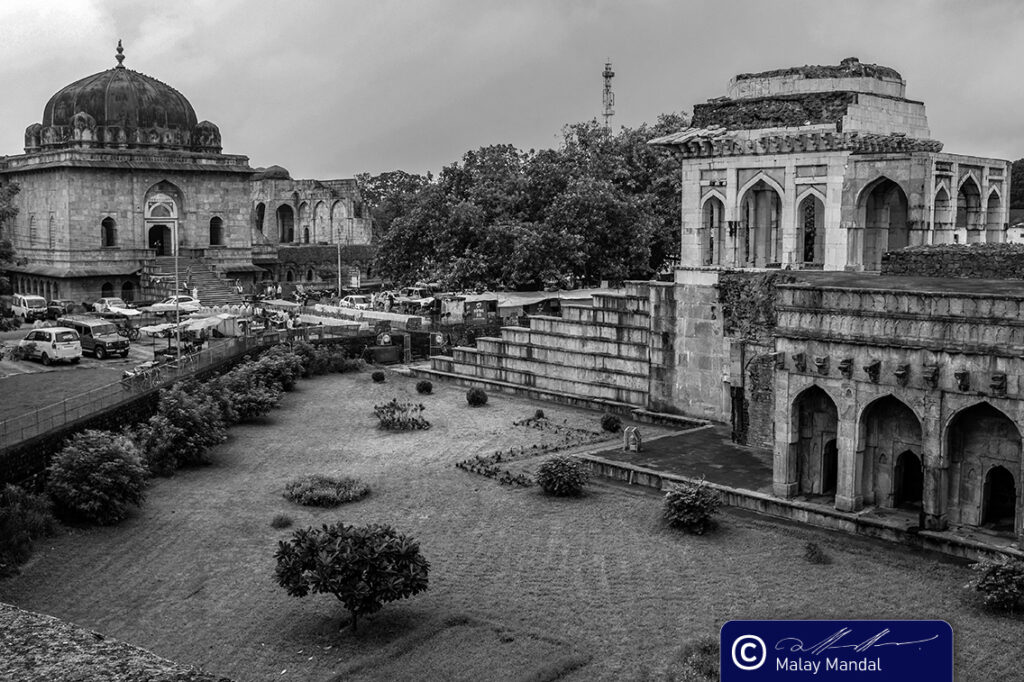
Download Sample
Want to know more, Grab your copy at Amazon India